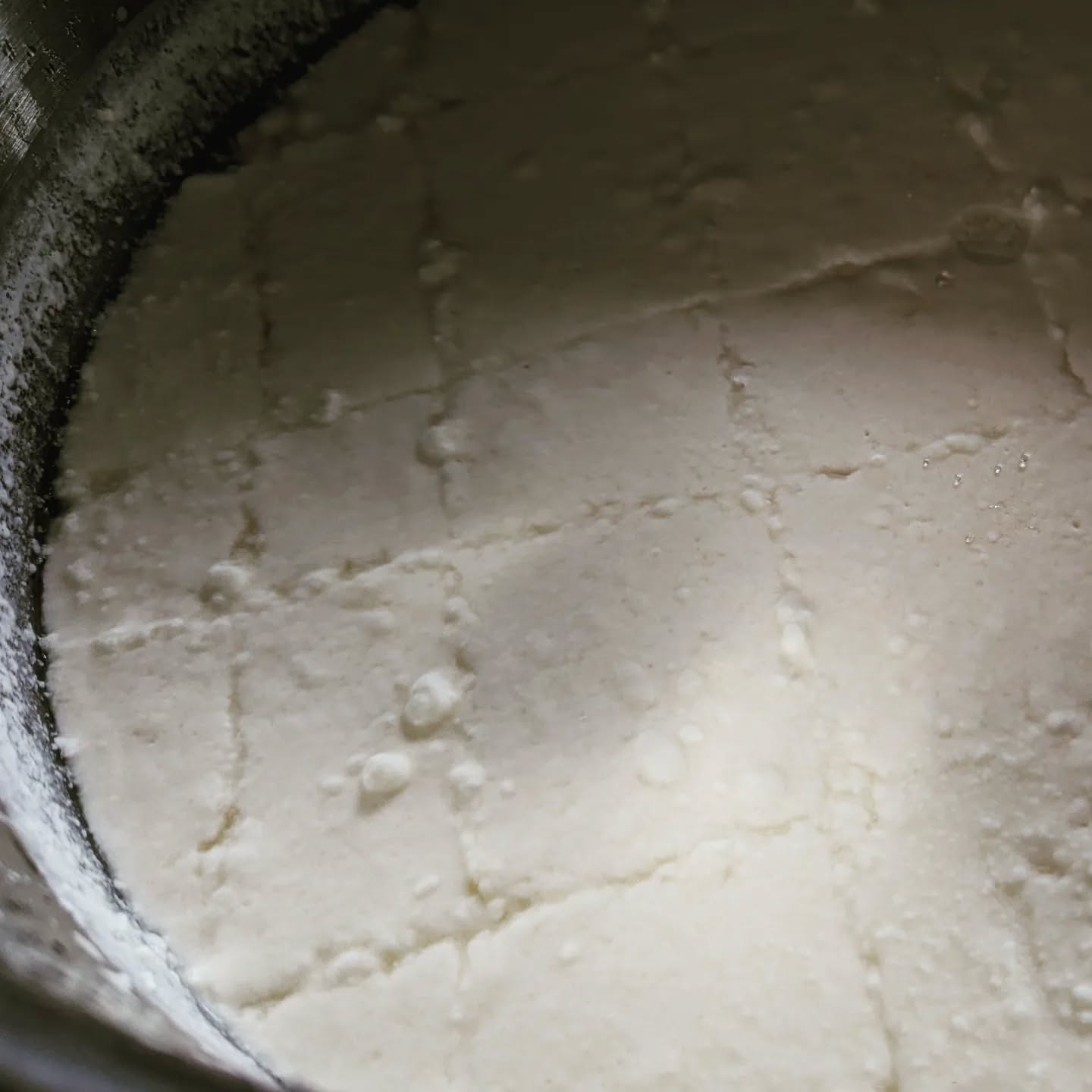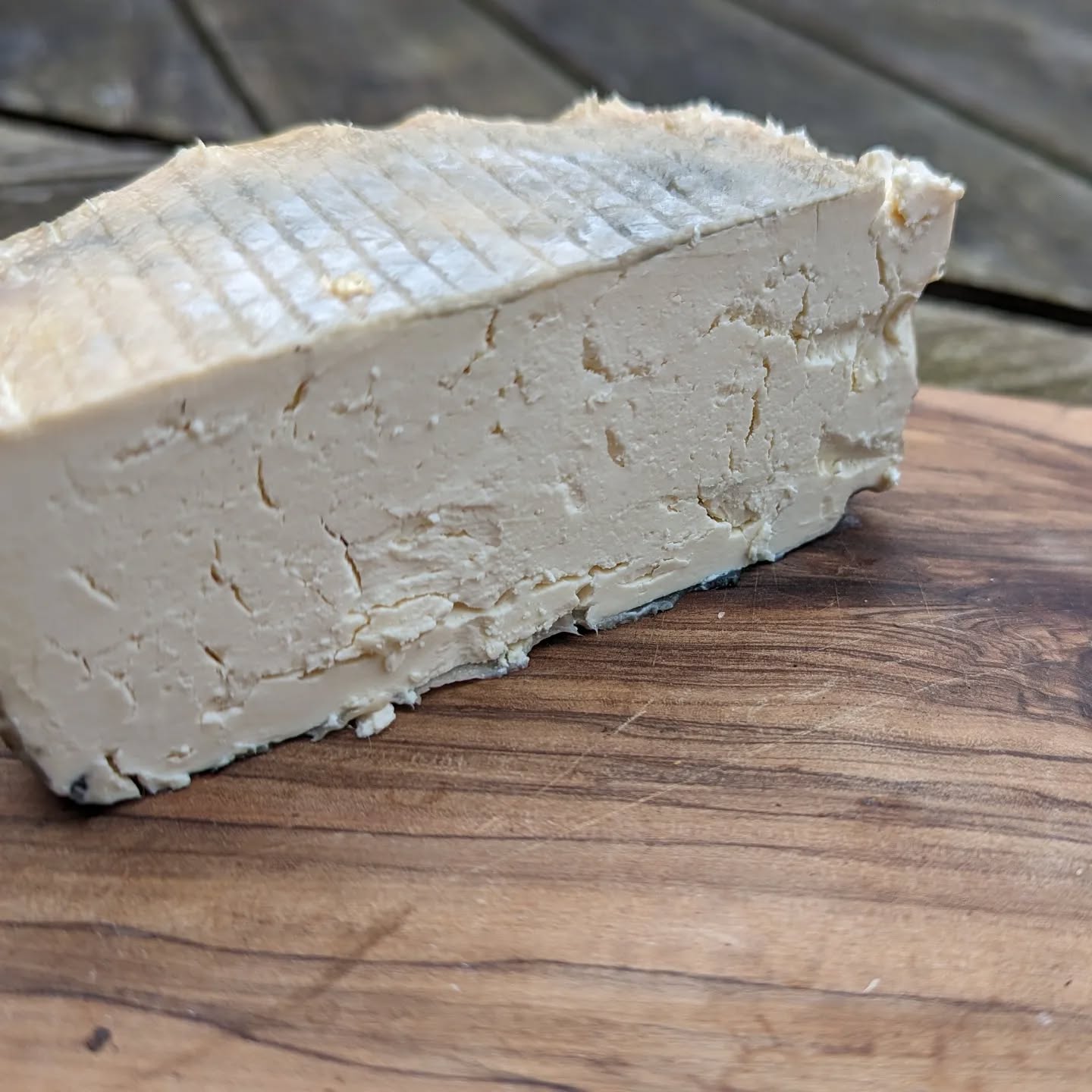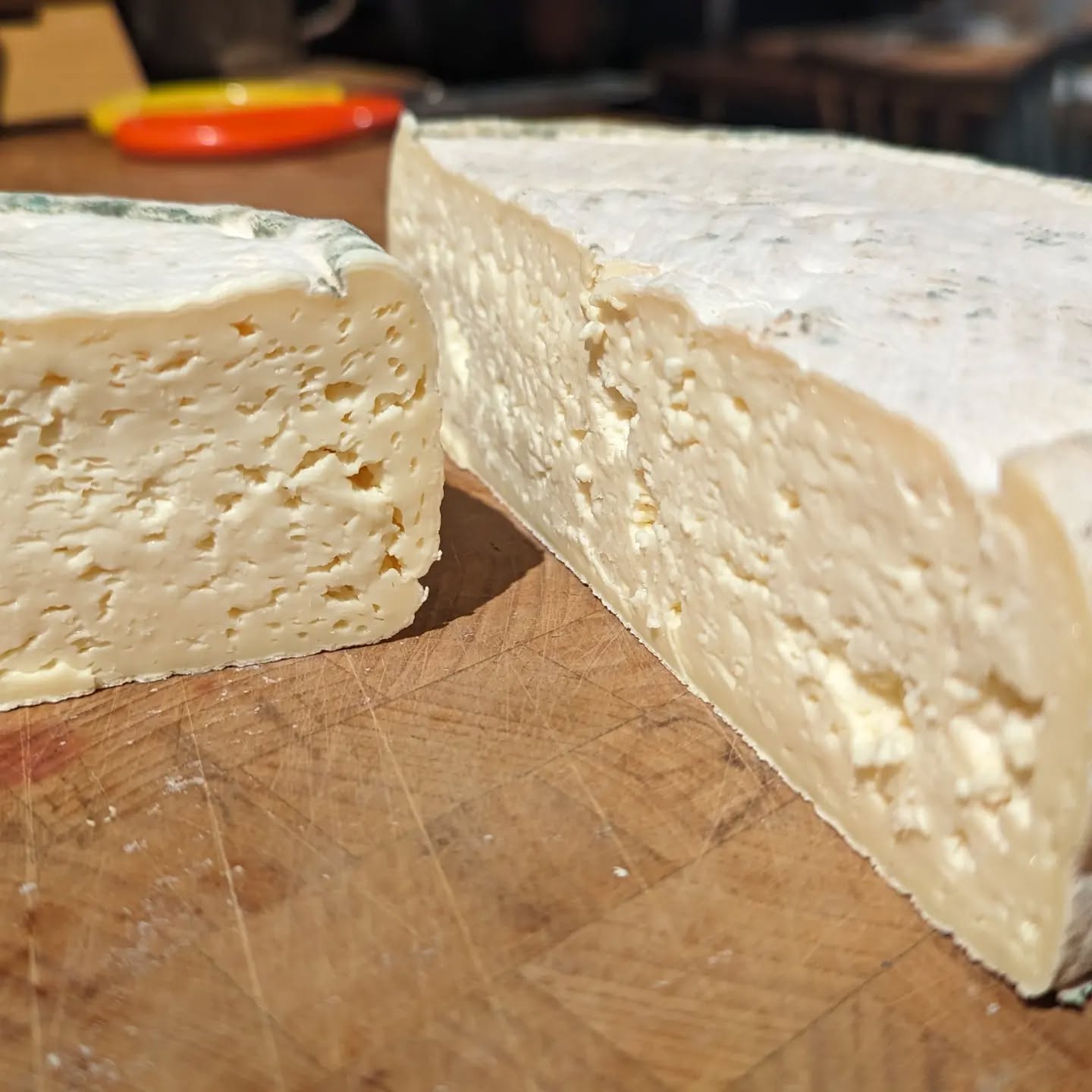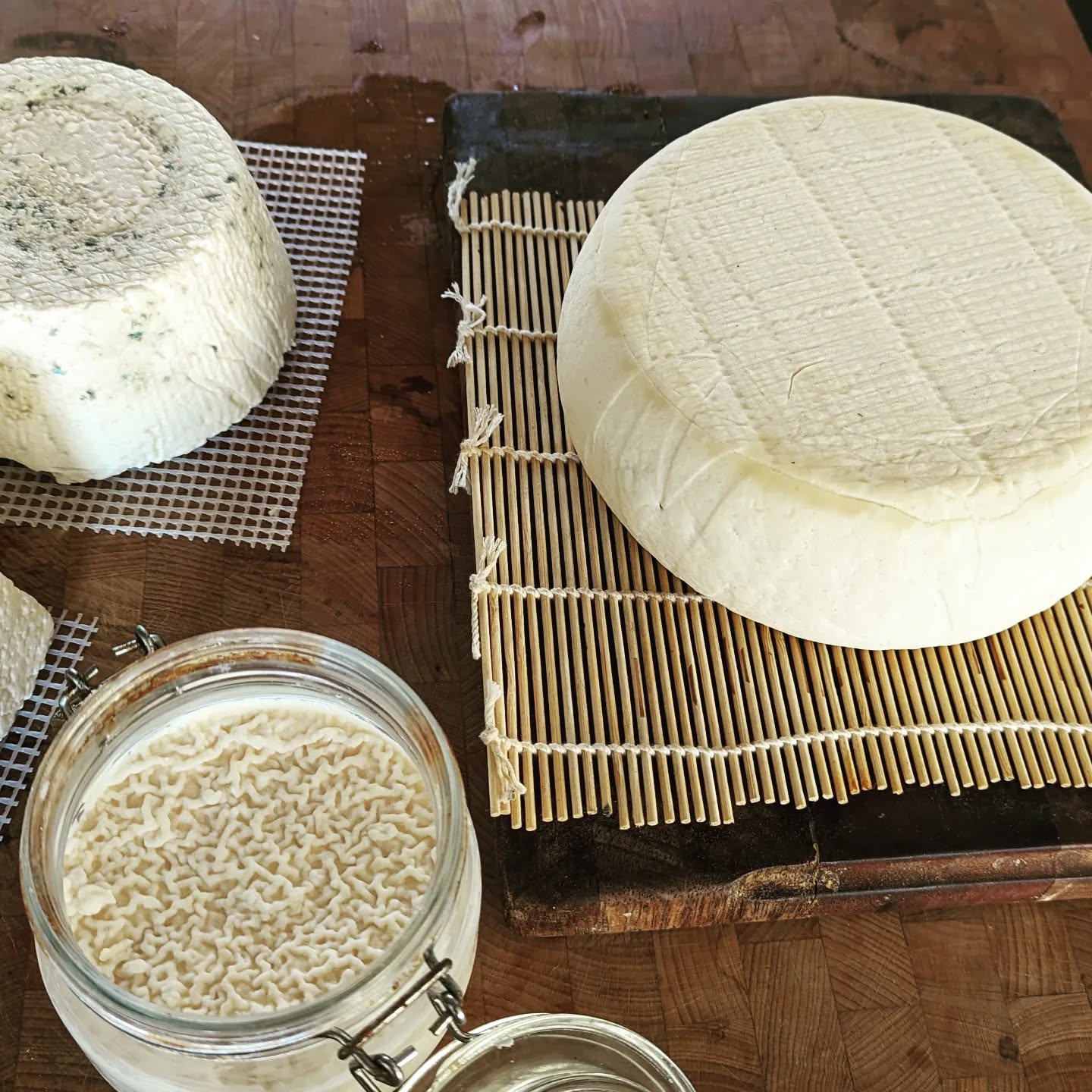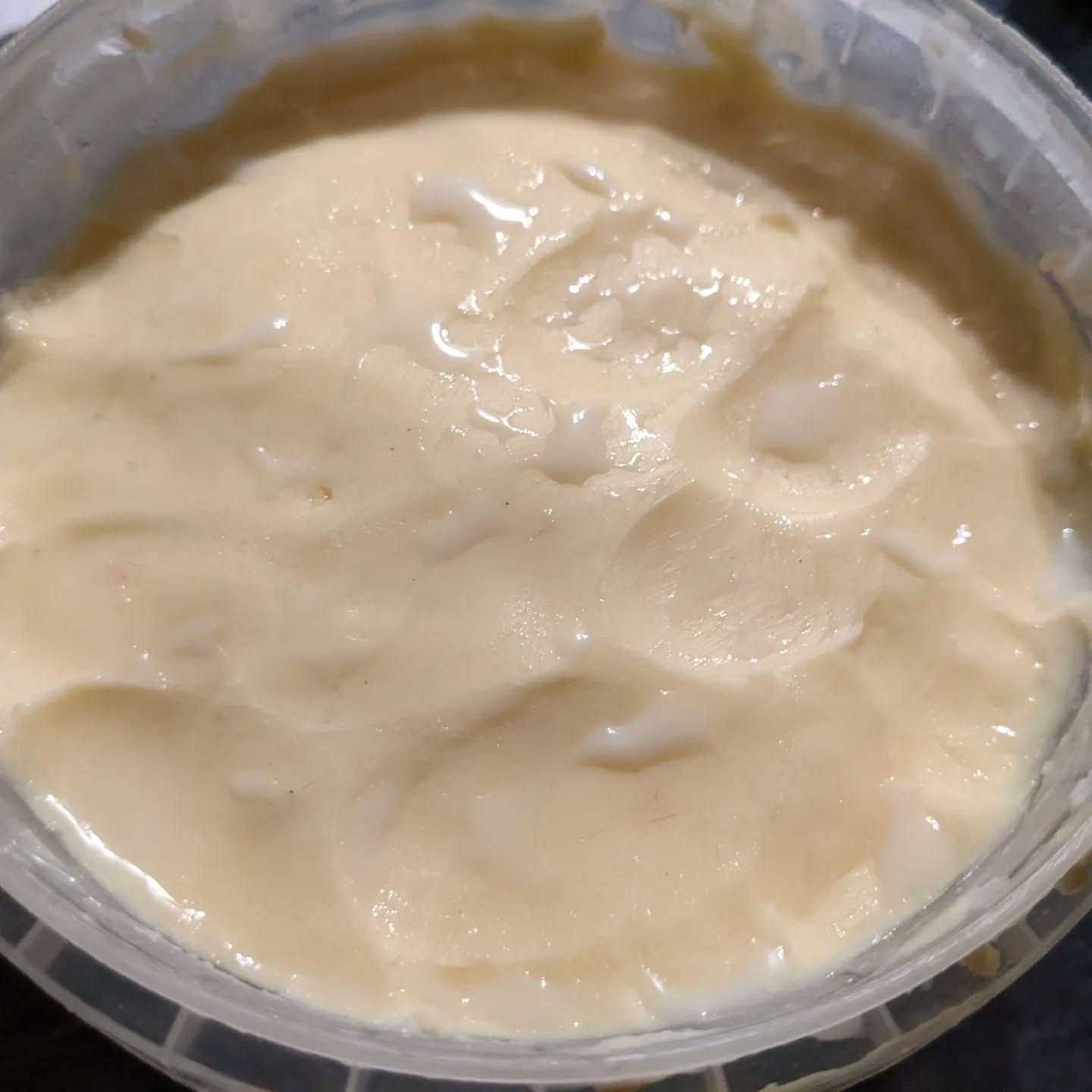· James Torr · Personal · 2 min read
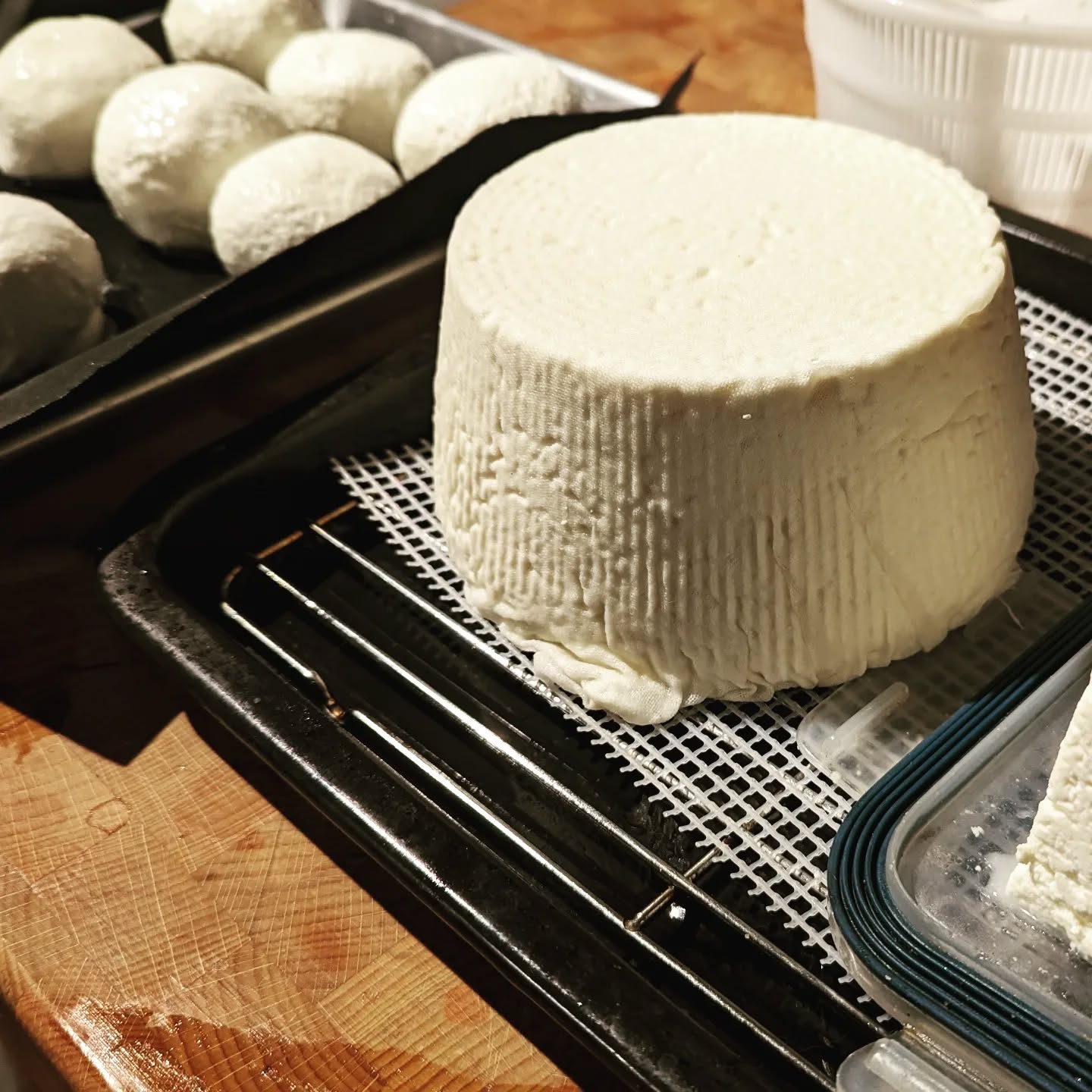
Picked up some discount milk during the holiday insanity and have been at it for a few days, reading and learning about cheese.
Picked up some discount milk during the holiday insanity and have been at it for a few days, reading and learning about cheese. On the left here are quite a few mozz balls, which I’ve frozen for pizza. On the right is an Italian Ligurian cheese called bel paese. The curds are pretty firm and they’re not pressed. This will age in the fridge for 3-4 weeks.
The second picture is an attempt at a softer cheese. I’ve mixed the milk with my amasi lacto culture, and despite having quite old rennet, it set well. You can see a droplet of water on top, this pic is after about 48hrs or so of the amasi being introduced to the milk, it’s formed a thin and soft skin on top. I’m going to let it go another 24hrs or so and then drain. Interestingly the method the book (The Art of Natural Cheesemaking) uses is to put them in small kilner jars, of which I have an abundance. Looking forward to seeing how it turns out.
Unfortunately, the blue cheese version of this has refused to set, weird considering the pH is actually lower and I’ve used more rennet. I’m not sure why but I think I’m going to have to dump it. Not bad though, 3/4 batches seem to be going well.
I’ll report back with some pics in a month or so. Happy holidays folks!

